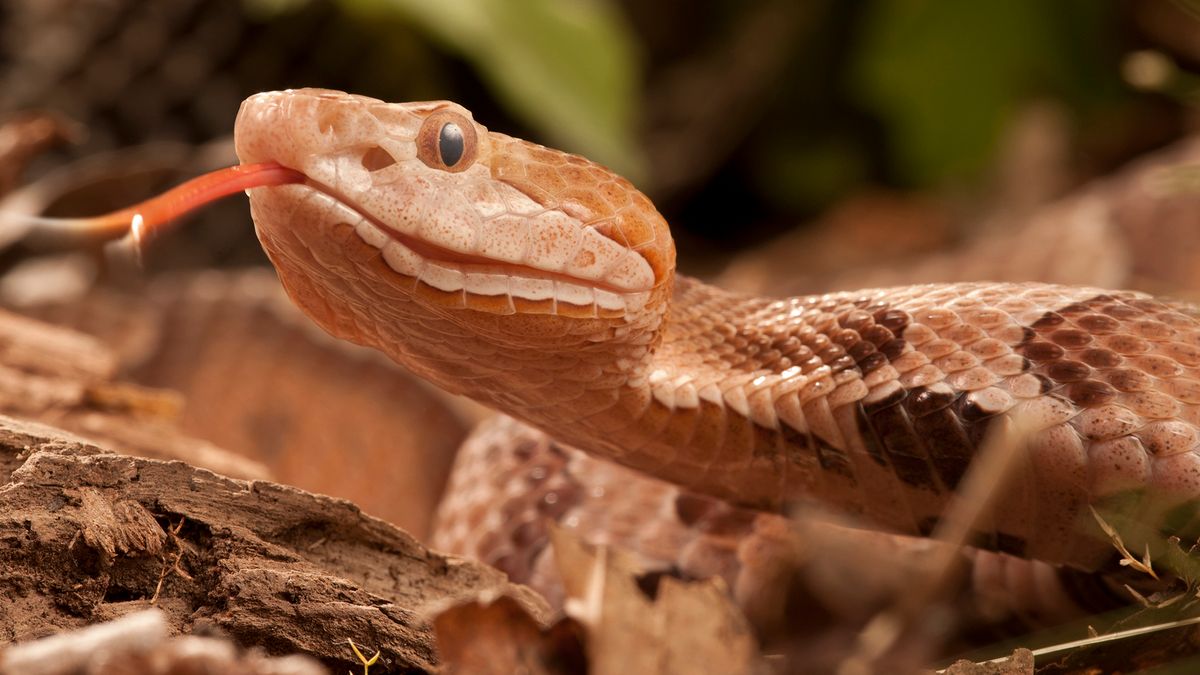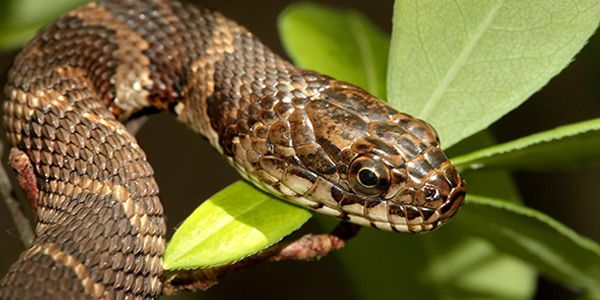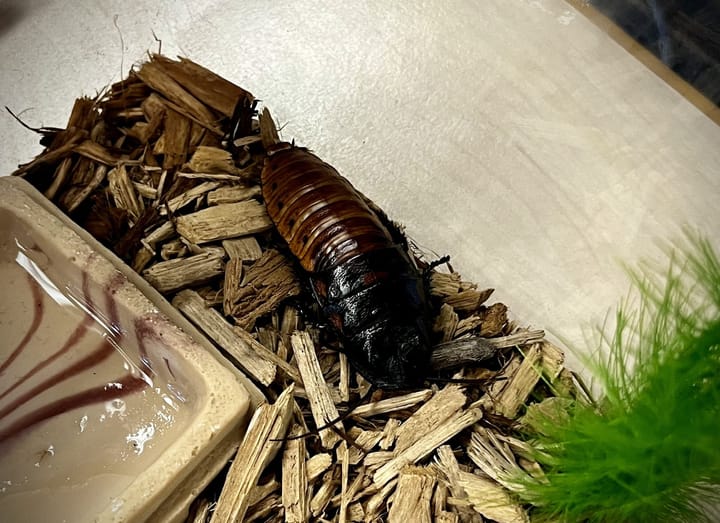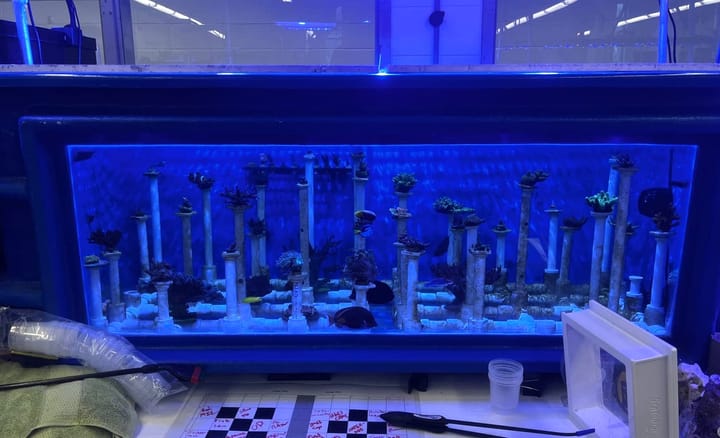The Snakes of Connecticut: Part One
The first in a four-part series on the native snakes of Connecticut.

Connecticut isn't a place known for having the most colorful or most diverse group of animals. A place that the state lacks in diversity is reptiles, with only 25 species native to Connecticut. Snakes take up a large portion of these native reptiles; 14 of the 25 native species are snakes.
For many people, the first thing that comes to mind when they think of snakes is snakebites. However, in Connecticut, most snakes aren’t venomous and aren’t a threat to humans. Of the 14 snakes in Connecticut, only two have venom that can have any impact on a human. The snake below, known as the northern copperhead, is one of those two.
The Northern Copperhead
Agkistrodon contortrix

The copperhead is a small, venomous snake in the family viperidae and measures about 2 to 3 feet in length. This terrestrial snake is most found in and around stone walls and rocky outcrops. It feeds mostly on small mammals. The copperhead gets its name from the dark, reddish coloring of its face, which can resemble copper or rust. The copperhead’s scientific name, Agkistrodon contortrix, is derived from the Greek word ankistron (meaning fishhook) and the Latin word conntortus (meaning twisted, intricate, complex).
Copperheads are solenoglyphous snakes, which means they have front-fixed fangs that fold when the mouth is closed. The fangs are generally very long, with large copperhead fangs nearing an inch in length. With these fangs, the snake can inject around 100 milligrams of venom into its target.
Bite symptoms include extreme pain, tingling, throbbing, swelling, and severe nausea. Damage can occur to muscle and bone tissue, especially when the bite occurs in the outer extremities such as the hands and feet, areas in which a large muscle mass is not available to absorb the venom. The venom is hemotoxic, which means that it attacks the blood. It is important to get medical attention as soon as the bite occurs, as the longer the venom has to act, the more damage it can do.
The fangs are generally very long, with large copperhead fangs nearing an inch in length.
Though the copperhead venom may be among the weakest in the pit viper subfamily, five people have died between 1989 and 2018 from copperheads. Copperhead bite rates spike in the summer when they enter the mating season and produce offspring.
A copperhead will generally give birth to 2 to 18 babies. The snakes are ovoviviparous, which means the eggs incubate inside the mother’s body and undergo a live birth. While copperhead mating usually requires a male and female, female copperheads have been known to undergo a process called parthenogenesis, a type of asexual reproduction where a mother can develop an embryo having the egg be fertilized with sperm. While this is a rare occurrence it has been seen in both the wild and captivity.
The Timber Rattlesnake
Crotalus horridus

The timber rattlesnake is a mid-sized, venomous snake in the family viperidae. Typically measuring in at around 3 to 5 feet, the timber rattlesnake is a mainly terrestrial (land-based) snake. It is usually found in areas of low elevation (usually less than 500 feet above sea level) in and around stone walls and rocky outcrops. Timber rattlesnakes feed on small mammals, birds and amphibians.
The timber rattlesnake’s common name is a reference to its location, as it is found in deciduous forests and can easily be mistaken for a piece of wood. The scientific name, Crotalus horridus, is derived from the Latin words Crotalus (meaning rattle) and horridus (meaning dreadful, bristly, rough).
The timber rattlesnake’s common name is a reference to its location, as it is found in deciduous forests and can easily be mistaken for a piece of wood.
Like the copperhead, the timber rattlesnake has solenoglyphous fangs, which are front fixed and fold when the mouth is closed. With these fangs, which can reach lengths of more than an inch, timber rattlesnakes can inject up to 800 milligrams of venom. Within this species, there are four different types of venom. In Connecticut, the most common venom variety is type B, which has hemorrhagic and proteolytic effects. This means the venom attacks the blood systems of the body, causing blood hemorrhaging. The proteolytic part of the venom breaks down proteins in the body, causing muscle and cell death. Between 1989 and 2018, 74 people died from timber rattlesnake bites.
Similarly to copperheads, bite rates of timber rattlesnakes spike in the summer, as this is the mating season for their species. The female rattlesnake will give birth to 3 to 13 babies. Timber rattlesnakes are ovoviviparous, which means that they give live birth. Although the copperhead and rattlesnake are closely related, the timber rattlesnake can’t undergo parthenogenesis.
The Northern Water Snake
Nerodia sipedon

The northern water snake is a small, semi-aquatic species in the family colubridae. Measuring 2 to 4 feet in length, the northern water snake uses its size to overpower smaller animals for a meal, swallowing prey whole. Their diets consist of fish, frogs, leeches, crayfish, large insects, salamanders, other snakes, turtles, small birds, and mammals.
While the species is mostly terrestrial, it gets its name by living around streams, lakes and ponds. Its scientific name is Nerodia sipedon which comes from the words Nerodia (derived from the Greek word neros, which means flowing or liquid) and sipedon (derived from the Greek word sepedon, which means rottenness or decay).
The northern water snake uses its size to overpower smaller animals for a meal, swallowing prey whole.
Northern water snakes do not have any venom, but they do have a mild anticoagulant that can stop blood clotting and leave wounds open. This is not strong enough to pose any real danger to humans.
The northern water snake has a mating season in the early summer, with females giving birth to 8 to 30 babies. This species is ovoviviparous, giving birth to live young. After birth, the young seek shelter in small streams near large bodies of water. The streams help them to avoid predators, while the larger bodies of water provide a space to search for food.
Check back in the October edition for part two of this four-part series on Connecticut's native snakes.





